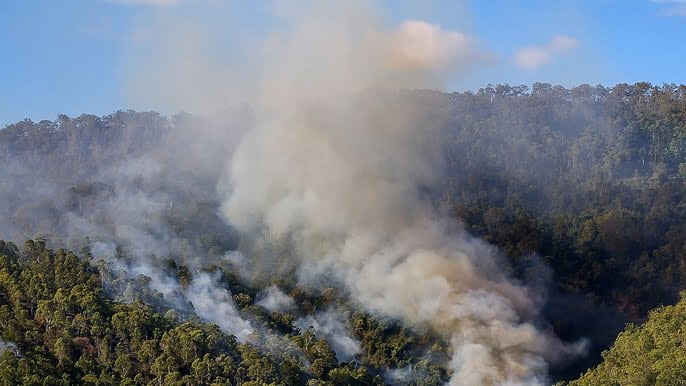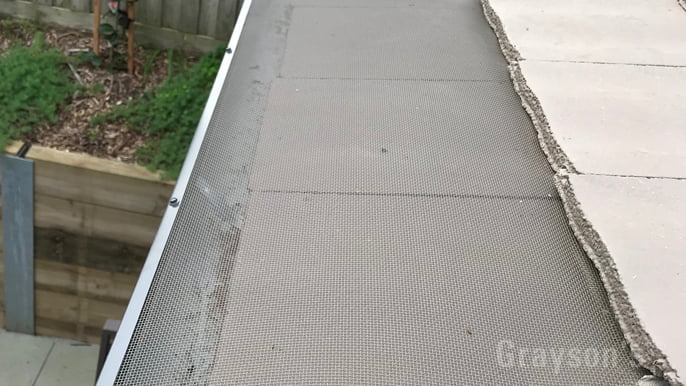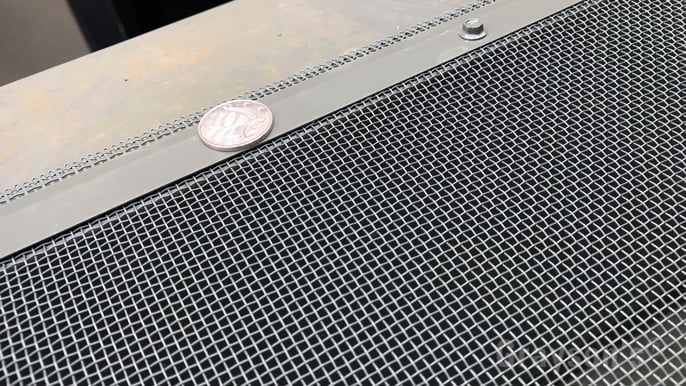If you live anywhere near the bush, you should plan for the potential risk of bushfires. One of the reasons homes are so vulnerable during a bushfire is the lack of protection against ember attack. Airborne embers can be carried by the wind and will often start a fire where they land, especially if they settle on something combustible like dry leaf build-up in the gutters.
After the catastrophic Black Saturday bushfires in 2009, the Victorian government developed new standards for how fireproof a home should be, based on its “Bushfire Attack Level”. It is recommended to retrofit your home to protect your family and property, with bushfire-rated gutter guard being an important part of the equation.


What is Bushfire Attack Level?
Bushfire attack level, or BAL for short, is a number that signifies how vulnerable a home is to ember attack, radiant heat, and direct flame contact. In other words, it tells you of the level of danger your home faces from bushfires. For certain levels, the Victorian Building Authority recommends retrofitting homes and buildings in order to protect them from bushfires and make them safer.
The Victorian government released a guide that allows homeowners to calculate the BAL of their property (check with your local council for more information). The bushfire attack level of a property is determined by a few factors, including the probability that a bushfire would start in the area (which is called the Fire Danger Index or FDI), the type of vegetation that is in proximity to the home as well as the level of proximity, and the slope of the land in relation to the vegetation. The guide includes a point system and easy to read table that allows you to weigh all of the factors and determine your BAL.
The 6 Bushfire Attack Levels
These are the six Bushfire Attack Levels:
| Bushfire Attack Level | Description |
|---|---|
| BAL LOW | BAL Low refers to homes that are at low-risk, and do not require special designs or retrofitting. |
| BAL 12.5 | BAL 12.5 is the rating for homes and properties that are prone to ember attacks and will require some retrofitting. |
| BAL 19 | At BAL 19 the risk of ember attack is somewhat increased and there is also a chance of wind-borne embers igniting debris around the property. Chances of exposure to radiant heat are somewhat increased. Retrofitting will be necessary. |
| BAL 29 | At the BAL 29 rating the same risks apply but at an increased level, so once again retrofitting is required. |
| BAL 40 | BAL 40 has the same risks of ember attack and heat flux apply, but there is also some risk of direct exposure to flames, so retrofitting will not suffice. |
| BAL FZ | At BAL FZ (Flame Zone) once again, the same risks apply, but the risk of direct exposure to flames from the bushfire is even higher. Buildings cannot be retrofit, and should be rebuilt to specification instead. |
How Bushfire-Rated Gutter Guards Protect Your Home
Unprotected gutters get clogged up with all manner of debris, which can become bone dry and extremely combustible. It’s very easy for wind borne embers to land in a gutter and catch on fire, which can end up engulfing the entire house. Gutter guards sit over the gutters, blocking them from getting clogged with leaves and twigs. When they are well installed they actually ensure that the debris slides down off of the roof where it can be cleaned away easily.


However, not all gutter guards are the same. While all of Grayson’s Full-Metal gutter guards are non-combustible, it’s best to choose a dedicated ember guard for your gutters, especially if you live in a high BAL area.
What Makes Ember Guards Different from Other Gutter Guards?
A special bushfire-rated gutter guard or ember mesh has to be constructed in a way that follows government regulations to protect a home from flying embers or ember attack. The wind borne embers from a bushfire can cause catastrophic fires when they get into a home, or land on something combustible. They can be dangerous even when very small, so the Victoria Building Authority recommends that all openings in homes be covered with a fire-proof mesh with a maximum aperture of 2mm. This includes vents, windows, and, of course, gutters. They also recommend other measures be taken, including clearing and controlling the vegetation around the home, and ensuring roofs and fences be constructed of fireproof materials.


Grayson’s Bushfire Ember Mesh Gutter Guard has holes with <2mm aperture, as mandated, in order to prevent embers from entering roofing through the gutters. It is also much more durable than other kinds of gutter guards. This is because it is made of corrosion resistant and fireproof aluminium, per the requirements of the Building Authority. Additionally, Grayson’s Ember Mesh Gutter Guard is woven rather than moulded, which makes it much more tear resistant.
How is Ember Mesh Gutter Guard Installed?
The ember mesh gutter guard should be installed by professionals, since it must be attached in a screw-down method. It is of vital importance that the fire-rated gutter guard be installed in a way that does not allow for any fraying at the edge, and which allows debris to slide off of the roof.
For more information on retrofitting your home with Grayson’s Ember Mesh Gutter Guard, call us on 1800 GUTTER (1800 488 837).